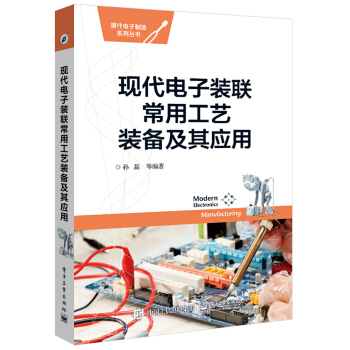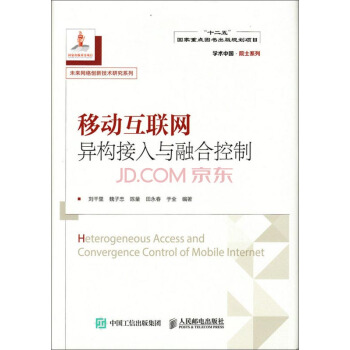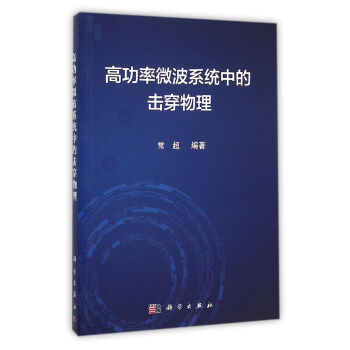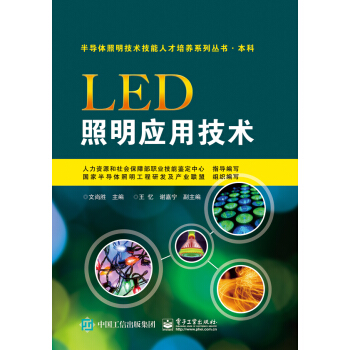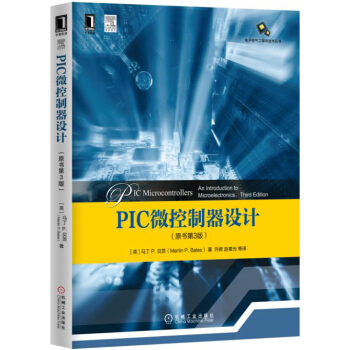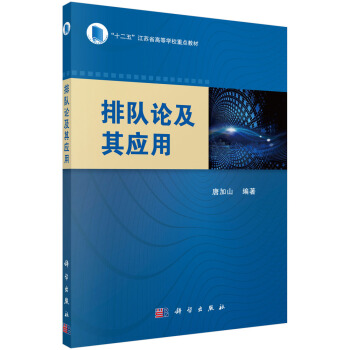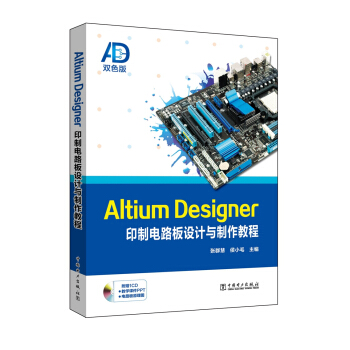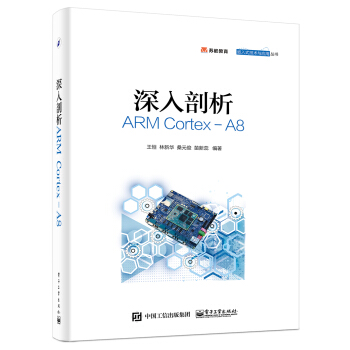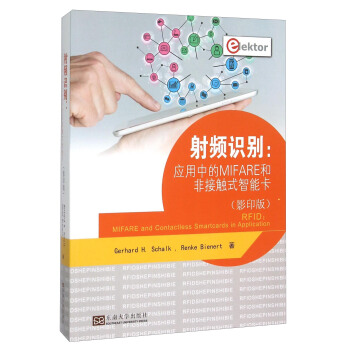

具体描述
内容简介
使用二维码、磁条、接触式IC卡的很多领域都已经被RFID技术所征服,诸如电子票、门禁卡、借记卡和数字证书这类应用每时每刻都需要用到这项技术。MIFARE是使用广泛的RFID技术,《射频识别:应用中的MIFARE和非接触式智能卡(影印版 英文版)》将提供与之相关的实用而又完备的介绍。此外,开始的章节会涵盖物理基础、相关标准、RFID天线设计、安全考虑和加密等内容。
《射频识别:应用中的MIFARE和非接触式智能卡(影印版 英文版)》详细阐述了完整的读卡器的软硬件设计。读卡器的固件和相应的PC软件支持任何NET语言编程。
特别开发的PC程序“Smart Cara Magic NET”是一个简单的开发环境,支持点击鼠标就发送命令到智能卡上,同时也可以创建C#脚本。另外,读者也可以参考所有使用Visual Studlo2010 Express版本的例子。
《射频识别:应用中的MIFARE和非接触式智能卡(影印版 英文版)》介绍了主要的智能卡读卡器API标准,着重讲解了如何使用C/C++、Java和C#在标准PC和智能卡读卡器上进行非接触式智能卡编程。
目录
Preface1 RFID Fundamentals
1.1 Introduction to RFID
1.1.1 RF
1.1.2 ID
1.1.3 RFID system classification
1.1.3.1 Frequenc{es and transmission principles
1.1.3.2 Applications
1.2 RFID system components
1.2.1 Card (PICC)
1.2.2 Reader (PCD)
1.3 ISO/IEC 14443 application example
1.3.1 Public transport ticketing
1.3.2 Employee identification cards
1.3.3 Electronic passports and identity cards
1.3.4 Other applications
1.4 Physical fundamentals
1.4.1 Energy transmission
1.4.2 Data transmission from PCD to PICC
1.4.2.1 Amplitude modulation
1.4.2.2 Standard data rate (106Kb/s)
1.4.2.3 Higher data rates (up to 848Kb/s)
1.4.3 Data transmission from PICC to PCD
1.4.3.1 Load modulation
1.4.3.2 Subcarrier modulation:Manchester encoding using ASK
1.4.3.3 Subcarrier modulation:NRZ encoding with BPSK
2 Overview of the Relevant Standards
2.1 ISO/IEC 14443
2.1.1 Part 1: physical properties
2.1.2 Part 2: RF properties and signals
2.1.3 Part 3: Card selection and activation
2.1.3.1 Type A: UIDs
2.1.3.2 Type A: card activation
2.1.3.3 Type A: SAK encoding
2.1.3.4 Type A: collision-detection and conflict resolution
2.1.3.5 Type B card activation
2.1.3.6 T ype B: Card activation parameters
2.1.4 Part 4: communication protocol
2.1.4.1 Protocol activation
2.1.4.2 T=CL protocol block structure
2.1.5 Information Block (I Block)
2.1.5.1 Receive-ready Blocks (R Blocks)
2.1.5.2 Supervisory Blocks (S Blocks)
2.1.6 Electromagnetic disturbance (EMD)
2.1.6.1 Rest period
2.1.6.2 Rest level
2.1.6.3 Distinction between invalid card response and EMD
2.1.6.4 The MFRC522 reader IC and EMD
2.2 ISO/IEC 10373-6 test methods
2.2.1 Test equipment
2.2.1.1 Calibration coil
2.2.1.2 Test PCD assembly
2.2.1.3 ReferencePICC
2.2.2 Tuning and calibration
2.2.2.1 Tuning
2.2.2.2 Calibration
2.2.3 Measurements at the reader
2.2.3.1 Range measurement
2.2.3.2 Measurement effort
2.2.4 Tests for Layer 3 and 4
2.3 Near Field Communication (NFC)
2.3.1 Introduction
2.3.2 NFC air interface
2.3.2.1 NFC device as card
2.3.2.2 NFC device as a reader
2.3.2.3 NFC device in 'active' mode
3 REID Antenna Design
3.1 Theoretical Fundamentals
3.1.1 Antenna as Resonant Circuit
3.1.2 Transformer Model
3.1.3 The Biot-Savart Law
3.1.4 Optimal Antenna Size
3.2 Reader Antennas
3.2.1 Antenna Quality
3.2.1.1 Data Transmission Bandwidth
3.2.1.2 Stability Against Detuning
3.2.2 Electrically Conductive Surfaces in the Vicinity of the Antenna
3.2.2.1 Ferrites
3.2.3 Balanced and Unbalanced Antennas
3.2.3.1 Balanced Antenna
3.2.3.2 Unbalanced Antenna
4 Security and Cryptography
5 Introduction to Cards and Tags
6 Reader Antenna Design
7 The Elekter RFID Reader
8 Cards and Tags in Application
9 Elektor RFID Projects
10 Smart Card Reader API Standards.
11 PC/SC Readers
12 List of Abbreviations
13 Bibliography
14 Index
前言/序言
用户评价
我一直对智能卡技术在安全和便利性方面的应用非常关注。这本书的标题直接点明了MIFARE和非接触式智能卡,这正是我非常感兴趣的领域。我常常思考,这些卡片是如何做到既能安全地存储个人信息,又能实现快速无接触的交互的。比如,在支付场景中,一张小小的卡片如何能够安全地处理交易,同时又比传统的刷卡方式更加便捷?又或者在门禁系统中,它又是如何验证身份,确保只有授权人员才能进入特定区域的?书中提到的“应用”二字,让我对这些实际场景有了更多的期待。我希望这本书能够深入浅出地解释MIFARE技术在这些应用中的具体实现方式,包括它在数据存储、加密以及通信协议方面的特点。同时,我也想了解非接触式智能卡作为一种更广泛的概念,与MIFARE卡之间存在怎样的联系和区别。它是否涵盖了更多种类的卡片和技术?这本书是否能够提供一些关于卡片安全性的讨论,例如如何防止欺诈和数据泄露?我对这些实际的应用和安全层面的思考非常感兴趣,希望通过阅读这本书,能够对这些问题有更深入的理解。
评分在我对科技产品的使用体验中,总有一些技术虽然看不见摸不着,却极大地便利了我的生活,RFID便是其中之一。这本书的标题——《射频识别:应用中的MIFARE和非接触式智能卡》(英文影印版)——让我对这些“隐形”技术产生了浓厚的兴趣。我常常会思考,我们每天都在使用的各种卡片,例如支付卡、门禁卡、交通卡,它们究竟是凭借什么能力来实现即时、无接触的交互的?MIFARE这个概念,我虽然在某些产品描述中见过,但对其背后的技术原理和它在智能卡领域所扮演的角色,我却知之甚少。这本书是否能够深入浅出地解释MIFARE卡的工作机制,包括它的数据存储方式、通信协议,以及它在安全性上的设计?我更期待的是,书中能够通过具体的“应用”案例,来展示MIFARE和其他非接触式智能卡是如何在公共交通、金融支付、身份管理等多个领域发挥作用的。它是否能为我揭示,这些看似简单的卡片是如何承载复杂的安全信息,又是如何与读写设备高效协作,最终为我们的生活带来极大的便利的?我希望能通过阅读这本书,对这些我们习以为常的技术有一个更深刻的认识。
评分作为一名对新兴技术充满好奇的普通读者,我最近翻阅了这本《射频识别:应用中的MIFARE和非接触式智能卡》(英文影印版)。虽然我不是技术专家,但书名本身就激起了我极大的兴趣。我一直对那些在我们日常生活中悄无声息地运作,却又至关重要的技术感到着迷,而射频识别(RFID)无疑就是其中之一。从我们过马路时感应的交通灯,到商店里快速扫码的结账通道,再到那些让我们“一卡在手,走遍天下”的各种卡片,RFID似乎无处不在。这本书着重介绍了MIFARE和非接触式智能卡,这让我对这些具体应用有了更直观的想象。我好奇的是,究竟是什么样的技术原理,能够让这些小小的卡片存储信息,并能与读写器进行如此便捷的通信?书中的“应用”二字更是吸引了我,我非常想了解RFID究竟在哪些领域发挥了作用,是安防?交通?还是更广泛的领域?这本书是否能为我揭示这些隐藏在日常生活背后的科技奥秘?它是否能用一种非技术人员也能理解的方式,来阐述这些复杂的技术概念?我期待它能提供一些生动的案例,让我更容易地理解RFID在现实世界中的价值和意义。
评分作为一个对信息技术发展趋势略有了解的普通读者,我被这本书的标题所吸引,特别是“应用中的MIFARE和非接触式智能卡”这一部分。我日常生活中接触到最多的非接触式卡片,莫过于公交卡、门禁卡,以及一些商家的会员卡。这些卡片无疑都属于非接触式智能卡的范畴。而MIFARE,这个我偶尔会听到的名字,似乎在这些应用中扮演着重要的角色。我很好奇,MIFARE到底是一种什么样的技术标准?它与其他非接触式智能卡技术有什么不同?这本书是否会详细介绍MIFARE卡的内部结构和工作原理,例如它所使用的芯片和天线技术?此外,“应用”这个词汇也让我对这本书的实用性充满了期待。我希望能从中了解到,MIFARE卡和非接触式智能卡是如何被集成到各种实际系统中的,比如公共交通、身份识别、甚至是物联网设备。这本书是否会提供一些具体的产品案例或者解决方案,来展示这些技术的落地应用?我对了解这些技术如何从概念走向现实,并为我们的生活带来便利和安全,有着强烈的兴趣。
评分我对RFID技术一直抱有浓厚的兴趣,尤其是它在现实世界中的落地应用。这本书的标题,特别是“应用中的MIFARE和非接触式智能卡”,精准地击中了我的关注点。我常常会思考,我们日常生活中使用的各种卡片,比如乘坐公共交通的交通卡、进入办公室的门禁卡,甚至是一些快速支付的卡片,它们背后究竟是怎样一种技术在支撑?MIFARE这个词汇,我虽然有所耳闻,但对其具体的技术细节和广泛的应用场景并不十分了解。我期待这本书能够深入探讨MIFARE卡的设计理念、其在安全性和便捷性方面的优势,以及它与其他非接触式智能卡技术相比有何独特之处。同时,我也非常想了解,这些非接触式智能卡在实际应用中是如何被部署和管理的。例如,在大型系统中,如何保证大量卡片的稳定运行和数据的安全性?书中是否会提及一些具体的行业案例,来展示这些技术是如何解决现实世界中的问题的?我希望这本书能够为我打开一扇了解RFID技术实际应用的大门,让我看到技术如何转化为切实可行的解决方案。
相关图书
本站所有内容均为互联网搜索引擎提供的公开搜索信息,本站不存储任何数据与内容,任何内容与数据均与本站无关,如有需要请联系相关搜索引擎包括但不限于百度,google,bing,sogou 等
© 2025 book.idnshop.cc All Rights Reserved. 静思书屋 版权所有


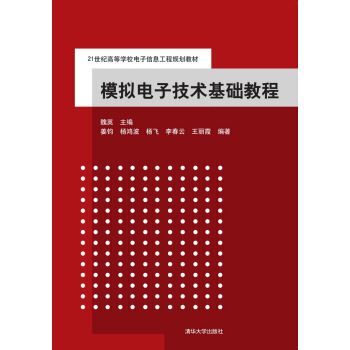
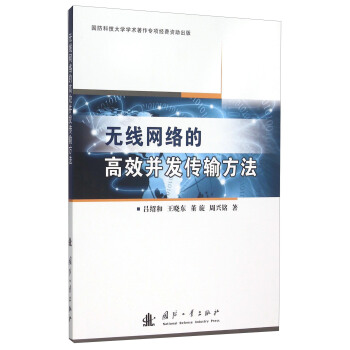
![密码故障分析与防护 [Fault Analysis in Cryptography] pdf epub mobi 电子书 下载](https://pic.tinynews.org/11824828/568a4355N79a89eda.jpg)
